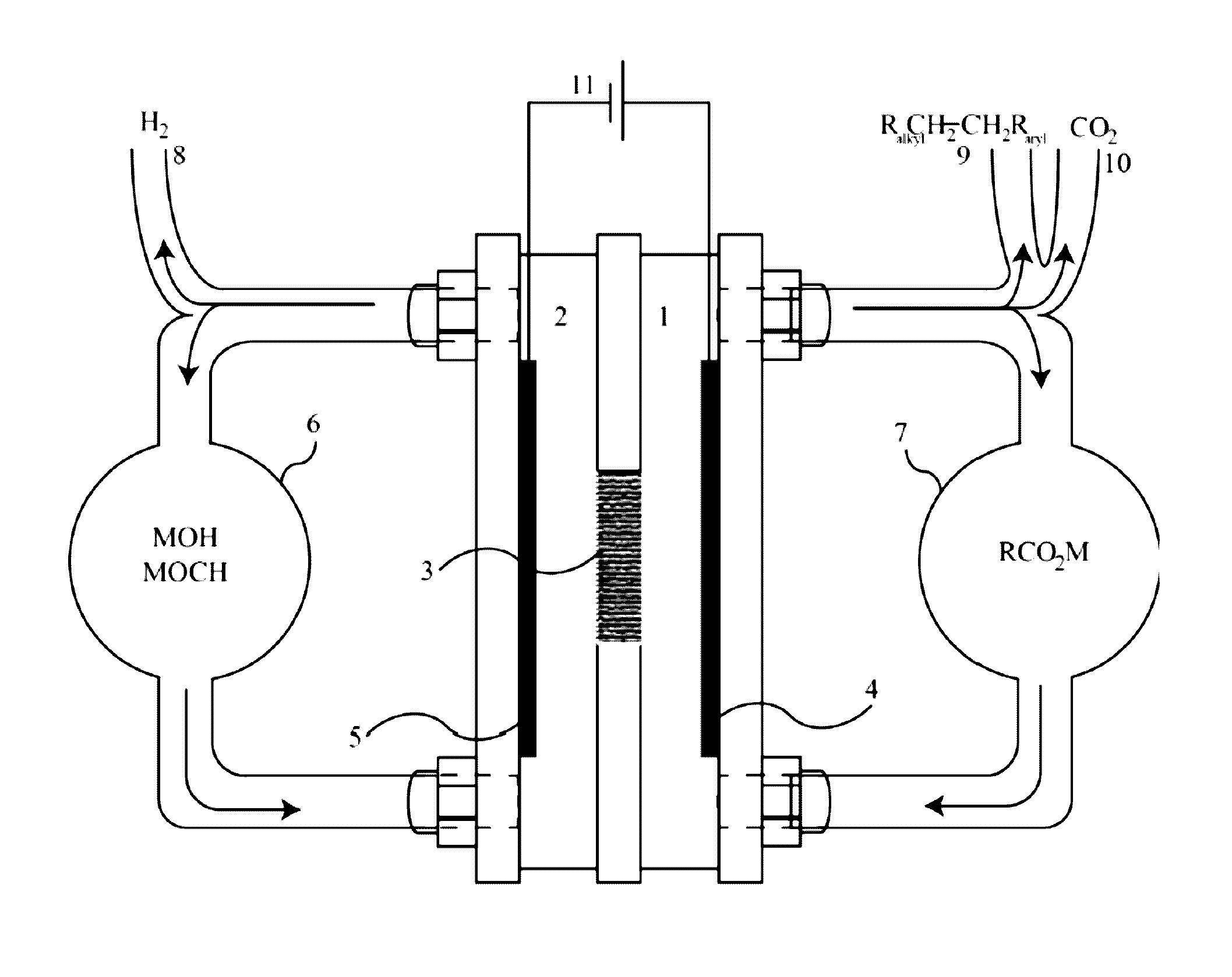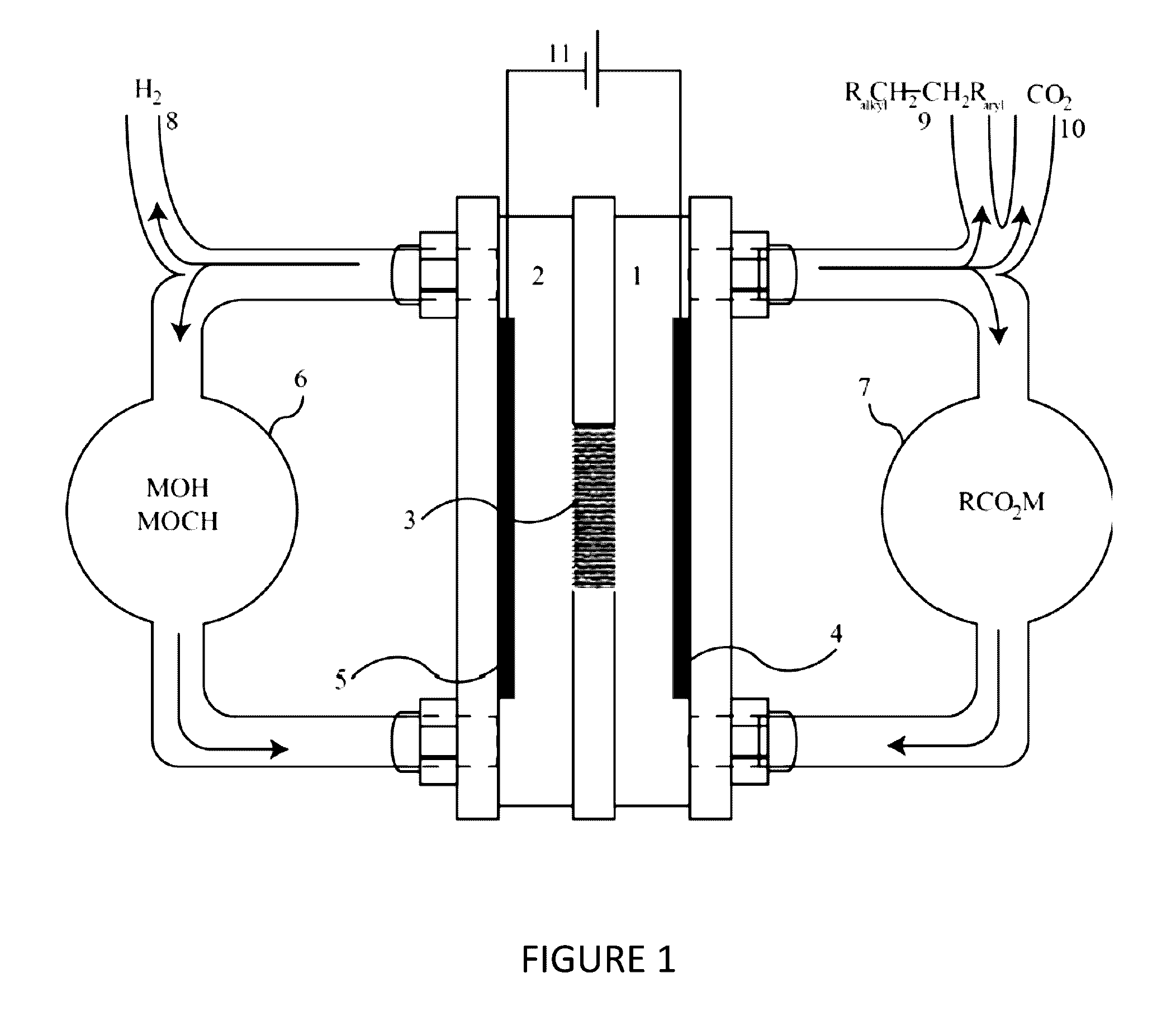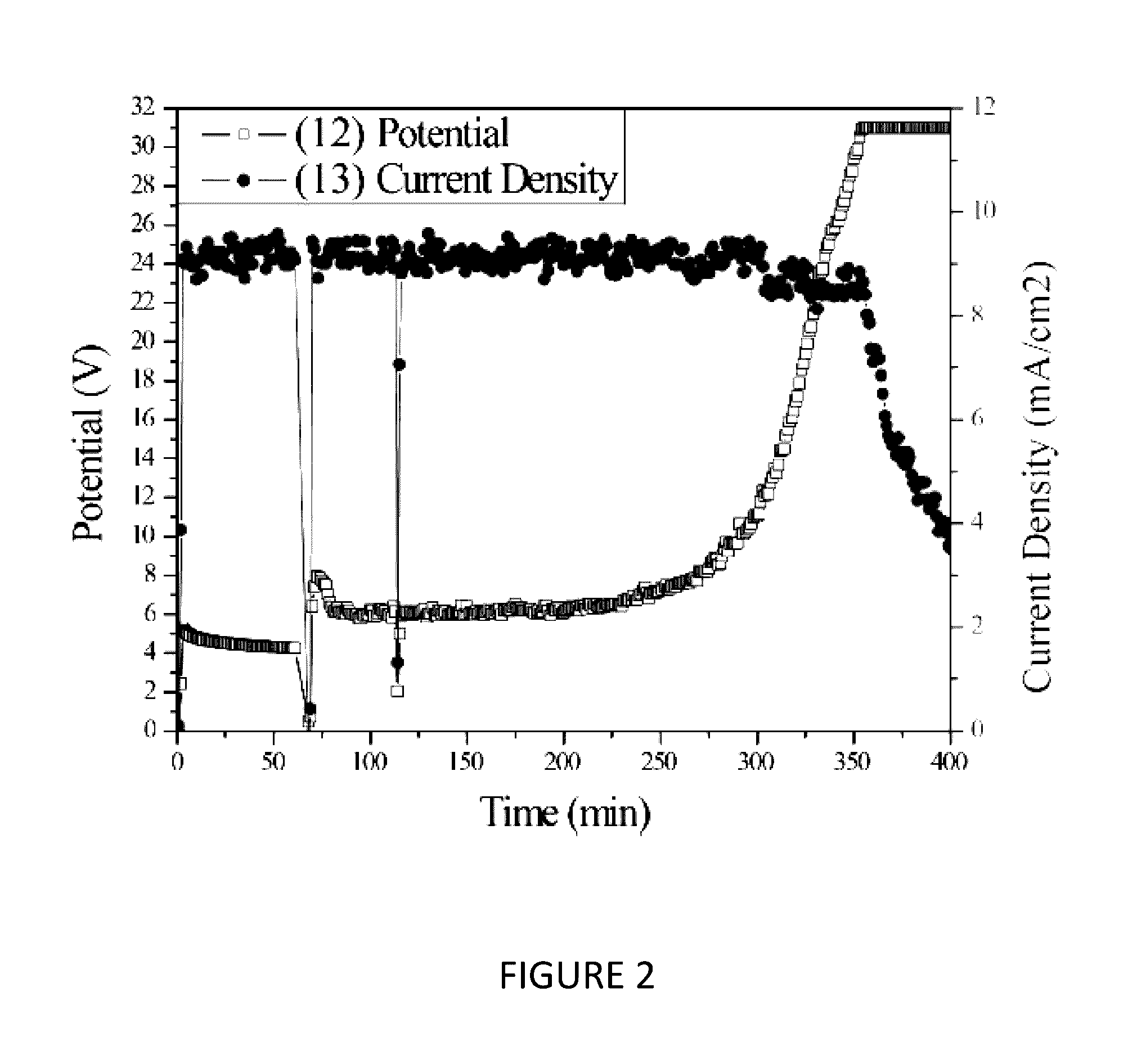Custom ionic liquid electrolytes for electrolytic decarboxylation
a technology of ionic liquid electrolytes and electrolysis, which is applied in the field of electrochemical synthesis of organic compounds using an electrochemical decarboxylation process, can solve the problems of limited carboxylic acid solubility, limited commercial application of such a process, and use of common polar organic electrolytes
- Summary
- Abstract
- Description
- Claims
- Application Information
AI Technical Summary
Benefits of technology
Problems solved by technology
Method used
Image
Examples
example 1
[0083]A custom IL electrolyte was prepared for the purpose of being used in an electrochemical decarboxylation process to convert the sodium salt of a carboxylic acid into longer chain hydrocarbon dimers. The dimers produced can be used as a solvent or can be further processed for other applications such as fuels or lubricants. The IL electrolyte consisted of a 1-butyl-3-methylimidizolium cation and the anion of the IL electrolyte consisted of a carboxylate anion. The carboxylate anion was the same carboxylate being converted into the hydrocarbon dimer by the decarboxylation process.
[0084]The IL electrolyte was prepared by combining 1-butyl-3-methylimidizolium chloride and sodium octanoate. The sodium octanoate (96%, Alfa Aesar) and the 1-butyl-3-methylimidizolium chloride (95%, Aldrich) were dissolved in two separate flasks of methanol. The 1-butyl-3-methylimidizolium chloride and the sodium octanoate were measured out to contain an equivalent number of moles. These two methanol so...
example 2
[0085]A custom IL electrolyte was prepared for the purpose of being used in an electrochemical decarboxylation process to convert the sodium salt of a carboxylic acid into longer chain hydrocarbon dimers. The dimers produced can be used as a solvent or can be further processed for other applications such as fuels or lubricants. The IL electrolyte was comprised of a 1-butylpyridinium cation and a carboxylate anion. The anion of the IL electrolyte consisted of the same carboxylate that was being converted to the hydrocarbon dimer by the decarboxylation process.
[0086]The IL electrolyte was prepared by combining 1-butylpyridinium chloride and sodium octanoate. The sodium octanoate and the 1-butylpyridinium chloride (98%, TCI) were added to a round-bottom flask and mixed until a homogenous mixture was obtained. The 1-butylpyridinium chloride and the sodium octanoate were measured out so there were 1.5 more moles of sodium octanoate than moles of the 1-butylpyridinium. Methanol was added ...
example 3
[0087]A custom IL electrolyte was prepared for the purpose of being used in an electrochemical decarboxylation process to convert the sodium salt of a carboxylic acid into longer chain hydrocarbon dimers. The dimers produced can be used as a solvent or can be further processed for other applications such as lubricants. The IL electrolyte was comprised of 1-butyl-1-methylpyrrolidinium cation and a carboxylate anion. The carboxylate anion is the same carboxylate being converted into the hydrocarbon dimer by the decarboxylation process.
[0088]The IL electrolyte was prepared by combining 1-butyl-1-methylpyrrolidinium chloride and sodium octanoate. The sodium octanoate and the 1-butyl-1-methylpyrrolidinium chloride (99%, Fluka) were mixed into a homogenous mixture using equimolar amounts of the two salts. To this, 100 mL acetonitrile and 20 mL isopropanol were added and the solution was mixed under a N2 atmosphere to promote complete ion exchange. The remaining salts were filtered from th...
PUM
| Property | Measurement | Unit |
|---|---|---|
| thick | aaaaa | aaaaa |
| thick | aaaaa | aaaaa |
| thick | aaaaa | aaaaa |
Abstract
Description
Claims
Application Information
 Login to View More
Login to View More - R&D
- Intellectual Property
- Life Sciences
- Materials
- Tech Scout
- Unparalleled Data Quality
- Higher Quality Content
- 60% Fewer Hallucinations
Browse by: Latest US Patents, China's latest patents, Technical Efficacy Thesaurus, Application Domain, Technology Topic, Popular Technical Reports.
© 2025 PatSnap. All rights reserved.Legal|Privacy policy|Modern Slavery Act Transparency Statement|Sitemap|About US| Contact US: help@patsnap.com



